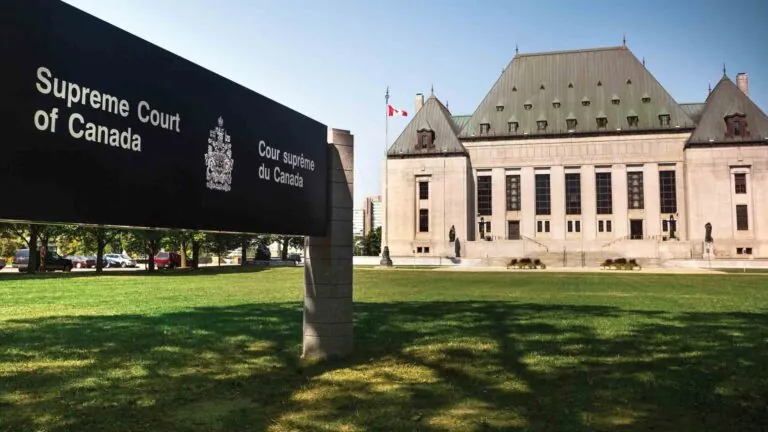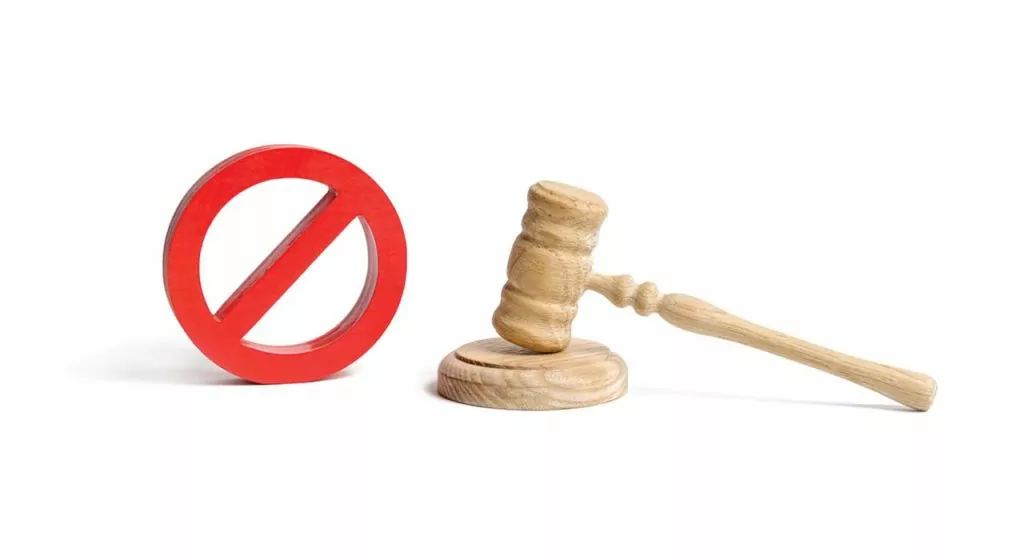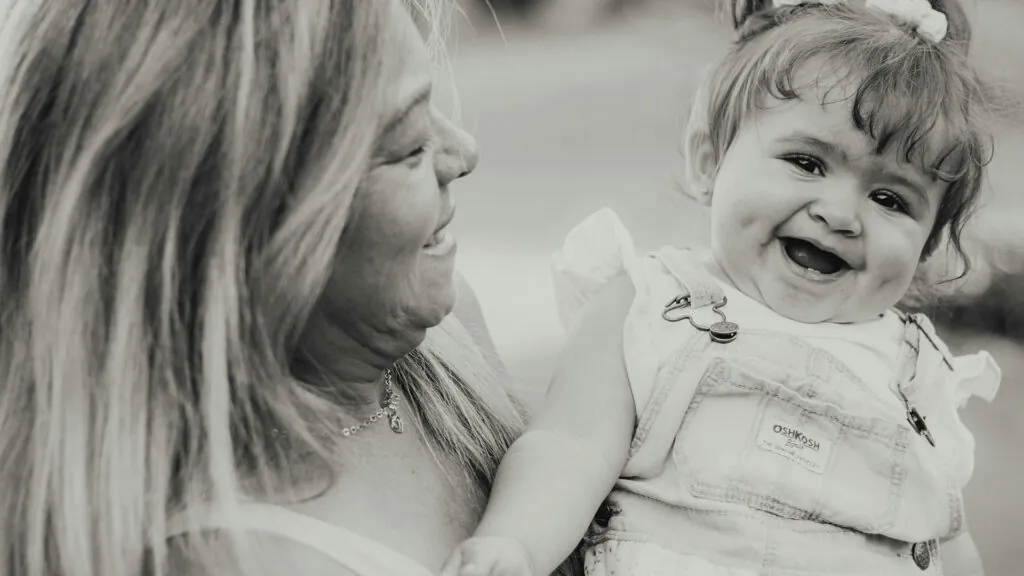In 1988 Canada’s Supreme Court’s gave their Morgentaler decision which struck down all restrictions on abortion in the country. Shortly afterwards the Supreme Court again dealt with abortion in the Borowski and Daigle cases. Together, these three cases have been called the “abortion trilogy” and a close look at these cases shows how Canada’s top judges can take a large amount of the credit for us being one of just three countries in the world with no protection for the unborn.
1. The Morgentaler decision
In 1983 abortionist Henry Morgentaler was charged with operating an illegal abortion clinic in Toronto. At that time, the law only allowed abortions to be performed in accredited hospitals with special abortion committees that had to approve each abortion. Morgentaler and his supporters considered this to be too restrictive.
His case went all the way to the top and on January 28, 1988, the Supreme Court ruled that Canada’s abortion law violated section 7 of the Charter. The majority of judges argued that the abortion law violated the procedural fairness required by the Charter of Rights. While this was a major victory for Morgentaler, there was a sense in which that decision was not a complete defeat for the pro-life cause because it gave Parliament the option to pass better abortion legislation. (though Parliament hasn’t touched the issue since).
In his 1992 book Morgentaler vs. Borowski, University of Calgary political scientist Ted Morton relates some little known information that shines some light on the Supreme Court’s thinking. Morton notes that when Gwen Landolt, a lawyer and leader of the pro-family group REAL Women of Canada, read the Supreme Court’s decision she noticed something startling. Four of the judges who struck down the law referred to a document known as the Powell Report in their decision. Dr. Marion Powell had been commissioned by the Ontario government to survey the availability of abortion services in Ontario. Dr. Powell was a “pro-choice” activist, and her report was released on January 27, 1987, three months after Morgentaler’s case had been heard by the Supreme Court.
Landolt reviewed the Morgentaler docket in the Supreme Court archives and confirmed that the Powell Report had not been mentioned in court when the case was argued – obviously because the report did not yet exist at that time. In other words, the Supreme Court, in striking down Canada’s abortion law, had relied heavily on a document that had not been submitted as evidence, and which had been produced by an abortion rights activist.
Landolt shared this information with Laura McArthur, the president of the Toronto Right to Life Association. McArthur then lodged an official complaint with the Canadian Judicial Council, arguing that the Court had deprived Morgentaler’s opponents of the right to challenge the Powell Report when the case was argued. Considering that Dr. Powell was a pro-abortion activist, the impartiality of her report was certainly questionable.
The Council replied that the issue raised by McArthur was outside of its mandate to consider, and also that the Supreme Court occasionally relies on materials which have not been introduced as evidence. This is known as “judicial notice.” However, as Prof. Morton notes, “To justify the Court’s use of the Powell Report as an exercise of judicial notice was to stretch the concept beyond its normal scope.”
2. The Borowski decision
While Henry Morgentaler had been fighting in the courts to strike down restrictions on abortion, a prominent Manitoba pro-life activist (and former provincial cabinet minister) Joe Borowski had been fighting in the courts to have abortion prohibited in Canada. That is, he was challenging the same law Morgentaler was challenging, except from the opposite point of view: Borowski said Canada’s abortion law violated the Charter because it allowed abortions to be performed. He argued that unborn children were protected by the Charter’s declaration that “everyone has the right to life.”
After considerable effort and expense, Borowski’s case reached the Supreme Court in October 1988. A few months later the Court ruled that it would not address Borowski’s arguments because his case had become moot. The law he was challenging had been struck down in the Morgentaler decision, so the Court did not need to address issues related to legislation that was no longer operative.
All of Borowski’s efforts were thwarted by this declaration that his case had become moot. Years of work and expense came to nothing. Now the pro-life movement had lost two cases at the Supreme Court, but there was one more yet to come.
3. The Daigle decision
On July 7, 1989, Jean-Guy Tremblay obtained a court injunction in Quebec to prevent his former girlfriend, Chantal Daigle, from aborting the child they had conceived together. The Quebec Superior Court upheld the injunction 10 days later. Then on July 26 the Quebec Court of Appeal also upheld the injunction. In a decision that shocked the country, that court ruled that an unborn child was a “distinct human entity” that “has a right to life and protection by those who conceive it.”
The Quebec Court of Appeal decision was immediately appealed to the Supreme Court of Canada. The Supreme Court judges were called back from their summer vacations to hold an emergency session on August 8. As Ted Morton and fellow University of Calgary political scientist Rainer Knopff write in their 1992 book Charter Politics, “Never before in the Court’s history had a case moved from trial to the highest court in the land with such speed!” Canada was in the midst of a full-fledged crisis. How dare a court in this country declare that unborn children had a right to life!
During the Supreme Court proceedings, Daigle’s lawyer announced that she had gone to the US and had an abortion there, making the case moot. The injunction preventing her from getting an abortion no longer had any practical effect. The Chief Justice then asked the opposing lawyers if they wished to continue the proceedings. Tremblay’s lawyer said no, but Daigle’s lawyer said yes. The Court therefore decided to continue, and within two hours they had struck down the (moot) injunction against Daigle, once again handing the pro-abortion side a complete victory.
That wasn’t all, however. The Court decided to do more than decide Daigle’s case, which concerned Quebec’s civil law. The Court went well beyond the questions of that case by also addressing the rights of the fetus under common law, which applies in the other nine provinces. This was to prevent a similar case from later arising in one of the common law jurisdictions.
The Supreme Court had previously taken the position that it wanted to avoid unnecessary judicial pronouncements. Morton and Knopff point out that in this case the Court violated its own maxim twice:
When the justices learned that Chantal Daigle had had her abortion, why did they persist in ruling on the issues involved rather than declaring the case moot – which it clearly was? Similarly, why did the Court expand the scope of its ruling to include the common law when this was not necessary for a Quebec appeal?
They note that, “for many this aspect of the Daigle decision encourages the suspicion that the Supreme Court is less than neutral on the abortion issue.”
Morton and Knopff indicate that there are other questions as well. When Borowski’s case became moot, the Supreme Court refused to proceed with it. When Daigle’s case became moot, the Court proceeded anyway. “Why under these circumstances, sceptics wonder, did the Court persist in deciding the issue of fetal rights? Why did it treat Borowski and Daigle so differently?”
As mentioned, Daigle’s case was rushed to the Supreme Court level unlike any previous case. Perhaps this can be justified because of the medical issues involved. It could be seen to be an emergency situation. As a result of the lack of time, there was much less legal preparation and input than usual for a major court case. When Daigle had her abortion, however, the emergency was over. There was no need to rush into a decision without proper study and thoughtful consideration. This was serious stuff, after all, because it concerned the supreme law of the land.
Morton and Knopff quote another constitutional expert as saying that it was a bad idea to rush ahead with the Daigle case and produce a major court ruling “in a hothouse, emergency atmosphere. This opinion will be with us for centuries.” And yet this important decision had been reached with considerably less preparation and argumentation than would normally occur. The Canadian people (most notably those in the womb) were not well served.
Operation Rescue
Besides the Daigle controversy, there was other activity on the abortion front in Canada during 1989. After the Morgentaler decision, many Canadian pro-lifers became increasingly frustrated about the lack of restrictions on abortion. Some joined Operation Rescue and engaged in civil disobedience directed primarily against Everywoman’s Health Clinic in Vancouver and two abortion clinics in Toronto. Operation Rescue was a group founded in the US to promote nonviolent resistance as a pro-life tactic.
Operation Rescue activists would use their bodies to block access to the entrance of abortuaries. Pregnant women were thereby prevented from entering and getting abortions. The police were always called in to break up the blockades. Court injunctions were imposed against these protests, but activists would often ignore the injunctions. Many were thus thrown in jail and fined. The courts in BC were particularly harsh in dealing with protestors who participated in Operation Rescue.
But while the mainstream media strongly approved of Daigle’s actions and her Supreme Court decision, it disapproved of the Operation Rescue missions. Writing at the time, Ted Byfield of Alberta Report pointed out the hypocrisy of the situation:
It’s true that, in aborting the child, she defied a court injunction. In Vancouver, that is a dreadful thing to do, as the judges so gravely aver every time they slam the abortuary rescuers into jail for doing it. [Daigle] receives no such admonition. She has been through enough, the judges decide. So we see how law is administered in Canada. If you defy an injunction in opposing abortion, you are a wretched criminal and must go to jail. If you defy an injunction in having an abortion, you are a national hero, and warmly commended.
Conclusion
Ted Byfield’s comment puts the matter clearly. Canada’s courts had become politicized. When they were presented with an abortion-related case, the outcome always favored the pro-abortion side. The courts reasoned one way in one case, and the opposite way in another case, in order to arrive at their desired decision. Their legal reasoning was steered in particular directions to achieve their political goals.
The courts will not change until Canadian society has been changed. This is why the efforts of pro-life groups are so important. Neither the politicians nor the courts will respond favorably to pro-life arguments until there’s a broader reception of the pro-life message. It isn’t going to start at the top – grassroots activity is essential to accomplishing this goal. We all need to talk to our neighbors.
This article first appeared in the April 2015 issue.












